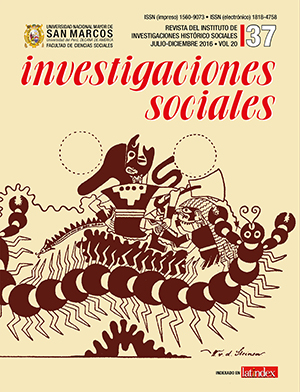Religious architecture in the Andes. Apogee, crisis and restoration
DOI:
https://doi.org/10.15381/is.v20i37.13425Keywords:
Christianization, Andean Churches, Religious art, Church Restoration, NeoevangelizationAbstract
Since the arrival of the Spaniards to the Tahuantinsuyo land magnificent churches as part of the process of Christianization of the vanquished they were built. The church was established in propitious space for the expression of arts such as architecture, sculpture and painting, coming from Renaissance Europe, which is enriched with the fusion of Indian and mestizo art. In big cities they flourished cathedrals and monasteries, founded by different religious orders; while in smaller towns, such as reductions of Indians, the church was built as the main building, located in the square, with its high bells to call converts. In about five centuries of history, numerous churches built in Peru have had their time of splendor and apogee as well as their decline and crisis. These repositories of colonial art linked to the spread of Christianity are at present; some in good condition and assets, others have deteriorated over time, telluric calamities and prolonged disuse. This article presents an ethnographic examination of these historical monuments, mainly emphasizing the process of remodeling colonial architecture and religious art, which aims to put in value and encourage modern Neoevangelization.Downloads
Published
Issue
Section
License
Copyright (c) 2017 Román Robles Mendoza

This work is licensed under a Creative Commons Attribution-NonCommercial-ShareAlike 4.0 International License.
AUTHORS RETAIN THEIR RIGHTS:
a. Authors retain their trade mark rights and patent, and also on any process or procedure described in the article.
b. Authors retain their right to share, copy, distribute, perform and publicly communicate their article (eg, to place their article in an institutional repository or publish it in a book), with an acknowledgment of its initial publication in Investigaciones Sociales.
c. Authors retain theirs right to make a subsequent publication of their work, to use the article or any part thereof (eg a compilation of his papers, lecture notes, thesis, or a book), always indicating the source of publication (the originator of the work, journal, volume, number and date).













